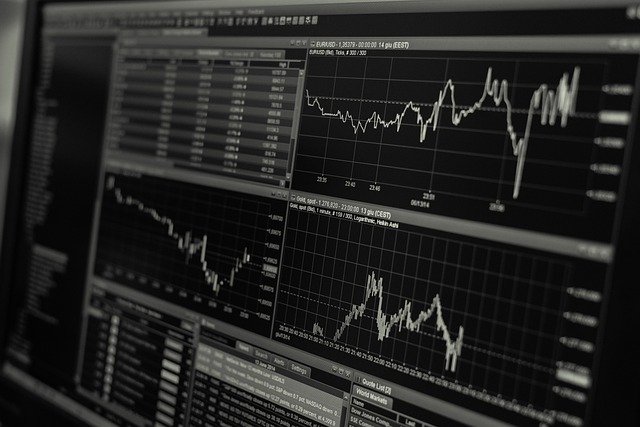Navigating the Era of Algorithmic Trading: A Guide for Individual Investors
In the fast-paced world of modern finance, algorithmic trading has emerged as a game-changer, revolutionizing how markets operate and investors make decisions. This sophisticated approach to trading, once the domain of institutional investors, is now increasingly accessible to individual traders. But what does this mean for the average investor, and how can they adapt to this new landscape?

The Rise of Algorithmic Trading
Algorithmic trading, often referred to as algo-trading, uses computer programs to execute trades based on predefined instructions. These algorithms can analyze market data, make decisions, and place orders at speeds far beyond human capability. The concept isn’t new, but advancements in technology and data processing have catapulted algo-trading to the forefront of financial markets.
In the early days, algorithmic trading was primarily used for simple tasks like breaking large orders into smaller ones to minimize market impact. Today, it encompasses a wide range of sophisticated strategies, from statistical arbitrage to news-based trading. Major financial institutions and hedge funds have been leveraging these technologies for years, but now, individual investors are gaining access to similar tools.
Impact on Market Dynamics
The proliferation of algorithmic trading has fundamentally altered market dynamics. One of the most noticeable changes is increased market liquidity. Algorithms can provide constant buy and sell orders, narrowing bid-ask spreads and making it easier for all market participants to execute trades.
However, this increased liquidity comes with its own set of challenges. The speed at which algorithmic systems operate can lead to rapid price movements, especially during times of market stress. Events like the 2010 Flash Crash, where the Dow Jones Industrial Average dropped nearly 1,000 points in minutes before quickly recovering, highlight the potential risks associated with high-frequency trading algorithms.
Moreover, the prevalence of algo-trading has changed the nature of market trends and patterns. Traditional technical analysis indicators may not be as effective in a market dominated by algorithms, forcing individual investors to adapt their strategies.
Opportunities for Individual Investors
Despite the challenges, the era of algorithmic trading presents numerous opportunities for individual investors. One of the most significant is the democratization of sophisticated trading strategies. Many brokerages now offer algorithmic trading platforms that allow individual investors to create and backtest their own trading algorithms without needing advanced programming skills.
These platforms often come with pre-built strategies that investors can customize to their needs. This allows individual traders to leverage algorithmic approaches previously only available to institutional investors, potentially leveling the playing field to some extent.
Furthermore, the abundance of data and analytical tools now available can enhance decision-making for individual investors. Machine learning algorithms can process vast amounts of financial data, identifying patterns and correlations that might be missed by human analysis alone.
Challenges and Risks
While algorithmic trading offers opportunities, it also presents significant challenges for individual investors. One of the primary concerns is the speed disadvantage. High-frequency trading firms can execute trades in microseconds, potentially front-running individual investors’ orders.
Another challenge is the complexity of the market environment. With algorithms reacting to each other in real-time, market movements can be unpredictable and difficult to interpret. This complexity can make it harder for individual investors to make informed decisions based on traditional market analysis.
There’s also the risk of overreliance on algorithms. While these tools can be powerful, they’re not infallible. Algorithmic trading systems can malfunction or make errors, potentially leading to significant losses if not properly monitored and managed.
Adapting to the Algorithmic Era
For individual investors looking to thrive in this new landscape, adaptation is key. Here are some strategies to consider:
-
Embrace technology: Familiarize yourself with algorithmic trading platforms and tools available to individual investors. Many brokerages offer educational resources to help you get started.
-
Focus on your strengths: While algorithms excel at rapid data processing and execution, human investors still have advantages in areas like long-term strategic thinking and interpreting complex economic scenarios.
-
Diversify your approach: Don’t rely solely on algorithmic strategies. A balanced approach combining algorithmic tools with fundamental analysis and human judgment can be more robust.
-
Stay informed: Keep up with developments in algorithmic trading and their impact on market dynamics. Understanding these trends can help you make more informed investment decisions.
-
Manage risk carefully: Be aware of the potential risks associated with algorithmic trading, including system errors and rapid market movements. Always use appropriate risk management strategies.
Key Strategies for Individual Investors in the Age of Algorithms
-
Educate yourself on algorithmic trading concepts and platforms
-
Leverage algo-trading tools offered by your brokerage, but understand their limitations
-
Combine algorithmic strategies with traditional fundamental and technical analysis
-
Focus on longer-term investments where human judgment still holds an advantage
-
Use stop-loss orders and other risk management tools to protect against sudden market moves
-
Regularly review and adjust your trading strategies to adapt to changing market conditions
-
Consider using algorithms for tasks like rebalancing your portfolio or executing dollar-cost averaging strategies
-
Explore niche markets or strategies where algorithmic trading is less prevalent
As algorithmic trading continues to shape the financial landscape, individual investors must evolve their strategies to remain competitive. By understanding the implications of this technology, leveraging available tools, and focusing on their unique strengths, individual investors can navigate this new era successfully. The key lies in embracing the changes while maintaining a balanced, informed approach to investing. In this algorithmic age, the most successful investors will be those who can effectively combine technological tools with human insight and judgment.





